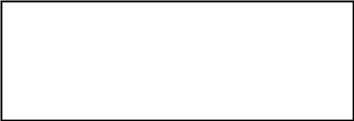ELEMENTS OF LITERATURE BOOK REPORT A PLOT 1 DESCRIBE
13 MESSAGES ELEMENTS WITHIN A GENESIS SIMULATION COMMUNICATE BY15 MUSICAL ELEMENTS OF BILL EVANS PLAYING “ON A
205 COMMON STRUCTURAL ELEMENTS COMMON STRUCTURAL ELEMENTS
22ND REVISION AUGUST 2020– UNDERLINED REVISIONS MANAGEMENT REVIEW ELEMENTS
3 THE USE OF TRACE ELEMENTS IN IGNEOUS PETROLOGY
61 CANVIS EN ELS ELEMENTS GEOLÒGICS CLAU DESCRIPCIÓ S’AVALUARAN
Elements of Literature Book Report
Elements of Literature Book Report
Plot
Describe what occurs during the exposition.
Describe what occurs during the complication.
Describe what occurs in the climax.
Describe what occurs in the resolution.
List and describe 5 examples of external conflict.
List and describe 5 examples of internal conflict.
List and describe 3 examples of suspense- Make sure you describe the most suspenseful event.
Character
What is revealed through the protagonist’s speech?
What is revealed through the protagonist’s thoughts?
What is revealed through the protagonist’s appearance?
What is revealed through what others say or think about the protagonist?
What is revealed through the protagonist’s actions?
Does the protagonist change during the story? Does this change make the protagonist a dynamic character? How?
What is revealed through the antagonist’s speech?
What is revealed through the antagonist’s thoughts?
What is revealed through the antagonist’s appearance?
What is revealed through what others say or think about the antagonist?
What is revealed through the antagonist’s actions?
Is the antagonist a dynamic or static character and why?
List the static characters and describe their role in the story.
Setting
Where is the location of the story? List the country, region, locale, and exact place of most of the story.
When is the story taking place? What year, season, and time of day dominate the story?
What do you sense about the setting? Describe the smells, tastes, sights, sounds, and physical feelings.
What emotions are linked with the setting?
Does the setting act as a source of conflict? How and with what effect on the characters?
Does the setting act as a character in the story? How?
Created by DeWalt
Point of View
Who is telling the story?
How much does the narrator know? Give examples.
How much does the narrator want the reader to understand? Give examples.
What point of view is the narrator taking in the story?
Describe the tone the narrator takes throughout most of the story.
Irony
Do the characters ever say one thing and mean the opposite? Give examples of this use of verbal irony.
Do the characters say things in a cruel and harsh way, intending to hurt in a personal manner? Give examples of these uses of sarcasm.
Does the reader know what is happening when a character does not? Give examples of this use of dramatic irony.
Does something happen just the opposite of what is expected? Give examples of this use of situational irony.
Theme
What insight about human nature is revealed in the story?
What view of the world is presented in the story?
Do you agree with the author’s view of the world? Why or why not?
If the title reveals a hint about the meaning of the story-describe how.
Does an object, a setting, an event, an animal, or a person stand for something greater than itself? How often does this symbol occur?
What do the symbols stand for?
Is there a problem in the story? How is it solved?
Using the 3 steps, a. subject, b. values transmitted, c.how the main character solves the problem and what this teaches about life in general, state a possible theme for the novel.
Extra Credit
List, define, and use in sentences 10 words you learned in the story.
Draw a character, the setting, or anything that inspires you in the story.
Write a song, rap or poem about the story.
Act out a scene from the story.
Write a different beginning ending, or scene from the story.
Make a list of things you learned from the story.
Describe a mystery solved in the story.
Describe something a character does that you like/dislike.
Tell the story to a classmate. Have the classmate write one page about the story.
Both of you get extra credit
Describe how you would have solved a problem differently in the story.
Compare/contrast this book with the last book you have read.
Describe the most interesting part of the book and tell why it is so interesting.
Describe how you are similar/different to a character in the book.
Report to the class about the book
Write a review listing strengths and weaknesses. DeWalt
9) STRONG PRIMARY BOND INVOLVING METAL ELEMENTS ENERGY LEVELS
?XML VERSION10 ENCODINGUTF8 ?RSS VERSION20 XMLBASEHTTPEVERGREENSOARINGINFONEWS XMLNSDCHTTPPURLORGDCELEMENTS11 CHANNEL TITLEEVERGREEN
?XML VERSION10 ENCODINGUTF8? XSSCHEMA XMLNSXSHTTPWWWW3ORG2001XMLSCHEMA XMLNSDCHTTPPURLORGDCELEMENTS11 ELEMENTFORMDEFAULTQUALIFIED ATTRIBUTEFORMDEFAULTUNQUALIFIED XSIMPORT
Tags: describe what, 13. describe, report, describe, elements, literature
- VELIKO GRADIŠTE MALI GRAD – VELIKIH MOGUCNOSTI VELIKO GRADIŠTE
- SPECYFIKACJA ISTOTNYCH WARUNKÓW ZAMÓWIENIA DLA POSTĘPOWANIA NR DI232018 ZAŁĄCZNIK
- PAMOKOS PLANAS MOKYKLA PANEVĖŽIO “ŽEMYNOS” PROGIMNAZIJA MOKYTOJA LIGITA BURAITIENĖ
- ANEXO 24 DIRECTORIO DE ENLACES Y CONTACTOS AUTORIZADOS PARA
- VALSTYBINIO SOCIALINIO DRAUDIMO FONDO VALDYBOS ŠIAULIŲ SKYRIAUS NEGYVENAMŲJŲ PATALPŲ
- ZPRÁVA ZE ZAHRANIČNÍ SLUŽEBNÍ CESTY JMÉNO ÚČASTNÍKA CESTY MGR
- CURRICULUM VITAE SURNAME PIOTROWSKA NAME HANKA DATE OF BIRTH
- CURRICULUM VITAE HARUTYUN MARUTYAN PHD DOCTOR OF SCIENCES (HISTORY)
- COMISSÃO ESTADUAL DA AGENDA TERRITORIAL INTEGRADA DE ALFABETIZAÇÃO E
- TEKST UJEDNOLICONY UWZGLĘDNIAJĄCY ZMIANY WYNIKAJĄCE Z ZARZĄDZENIA NR 31015
- I ECOUTER PARLER PHONOLOGIE A Q UESTIONNAIRE CF
- INVITACIÓN INFOCENTROS COMUNITARIOS CENTROS MEC Y RADIOS COMUNITARIAS EN
- PÁLYÁZATI FELHÍVÁS A BETHLEN GÁBOR ALAPKEZELŐ ZRT (A TOVÁBBIAKBAN
- TIMNET INTERNET MEDYA PAZARLAMA İ N T E R
- BỘ GIAO THÔNG VẬN TẢI CỤC HÀNG HẢI VIỆT
- CRIBBAGE KE HŘE SE POUŽÍVÁ TZV CRIBBAGE BOARD COŽ
- ASPECTES DE LA VIDA DE JESÚS 43 ELS MISTERIS
- MATEMÁTICAS 3º ESO TEMAS 6 ECUACIONES DEPARTAMENTO
- SERVICIO NACIONAL DE SANIDAD Y CALIDAD AGROALIMENTARIA MANUAL
- 8 INFORME NO 32131 PETICIÓN 27604 ADMISIBILIDAD
- 2DO DOMINGO DE ADVIENTO CICLO B 04 DE DICIEMBRE
- DLINK INTERNATIONAL PTE LTD MAIN LINE (65) 6501 4200
- RETIREMENT VILLAGE RESIDENT(S) SUBMISSION TO THE DIRECTOR OF CONSUMER
- MODELSTATUTEN VERENIGING MEDISCHE STAF [NAAM GGZINSTELLING] OP ………………………………… VERSCHENEN
- Z Á P I S ZO ZASADNUTIA ZDRAVOTNEJ SOCIÁLNEJ
- 1 5 EL DINER ELS ACTIUS FINANCERS (FINANCIAL
- 4ª EDICIÓN PREMIOS DE ARQUITECTURA DE MALLORCA 2007
- ZAŁĄCZNIK NR 7 DO REGULAMINU PRZYZNAWANIA WSPARCIA FINANSOWEGO NA
- CURRICULUM VITAE NOMBRE JORGE E ALCOVER FECHA NACIMIENTO 13081981
- 1032021 TEAM MICHIGAN TECHNOLOGICAL UNIVERSITY ELECTRICAL HAZARDS QUIZ 1
A LA DIRECCION GENERAL DE JUSTICIA DE MADRID C
ZAKON O CELOSTNI ZGODNJI OBRAVNAVI PREDŠOLSKIH OTROK S POSEBNIMI
 AUSIS MODULE EARTHQUAKE LOCATION AIM THE AIM OF
AUSIS MODULE EARTHQUAKE LOCATION AIM THE AIM OFPREVENTING HAY FIRES SOURCE DOUG OVERHULTS HAY BALE OR
 ZAŁĄCZNIK NR 13 DO UMOWY PORTFELOWEJ LINII GWARANCYJNEJ DE
ZAŁĄCZNIK NR 13 DO UMOWY PORTFELOWEJ LINII GWARANCYJNEJ DE ESTUDI DE LA RELACIÓ ENTRE LA LITERATURA I EL
ESTUDI DE LA RELACIÓ ENTRE LA LITERATURA I ELPAGE 4 OF 4 SECTION 08 44 18 FLUSH
LISTADO DE INSTITUTOS PEMEM NO DEPARTAMENTO NOMBRE DEL ESTABLECIMIENTO
 DRIFTSVEJLEDNING TIL NEDSIVNINGSANLÆG DATO UNDERSKRIFT – FAGLIGT ANSVARLIGE DERES
DRIFTSVEJLEDNING TIL NEDSIVNINGSANLÆG DATO UNDERSKRIFT – FAGLIGT ANSVARLIGE DERESANNUAL IMPROVEMENTS PROJECT 20082010 [A COPY OF THE EMAIL
FSERIES F100600 SPECIFICATIONS FOURFOLD DOOR SYSTEMS OPTIONS ARE IN
 OFFICINA DELLA FORMAZIONE SRLS (S8421) SEMINARIO NAPOLI E VIDEOSEMINARIO
OFFICINA DELLA FORMAZIONE SRLS (S8421) SEMINARIO NAPOLI E VIDEOSEMINARIOII TEIL DIE GEMEINDEVERBÄNDE § 129 GEMEINDEVERBÄNDE AUFGRUND VON
AN ATLAS OF TRAFFICKING IN SOUTHEAST ASIA THE ILLEGAL
 ANNEX V PAGE 7 OF 6 THE IFCGEF POLAND
ANNEX V PAGE 7 OF 6 THE IFCGEF POLAND UNIVERSIDAD DE EL SALVADOR FACULTAD DE CIENCIAS Y HUMANIDADES
UNIVERSIDAD DE EL SALVADOR FACULTAD DE CIENCIAS Y HUMANIDADES ATTACH RECENT PASSPORT SIZE PHOTOGRAPH HERE INTERVIEW APPLICATION FORM
ATTACH RECENT PASSPORT SIZE PHOTOGRAPH HERE INTERVIEW APPLICATION FORM TRNAVSKÁ UNIVERZITA SO SÍDLOM V TRNAVE SPRÁVA O ČINNOSTI
TRNAVSKÁ UNIVERZITA SO SÍDLOM V TRNAVE SPRÁVA O ČINNOSTILEY 52007 DE 3 DE ABRIL DE LA RED
OŚRODKI LECZENIA UZALEŻNIEŃ CENTRUM PROFILAKTYKI UZALEŻNIEŃ NZOZ AL MARCINKOWSKIEGO